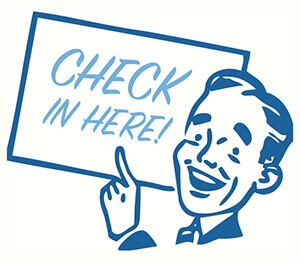How a Facility’s Layout Impacts Efficiency & Productivity
By Walter Morris
One of the daily challenges pet care businesses face is their facility layout. The layout of the building can significantly impact efficiency and productivity.
Approximately forty years ago when I was planning to design and build a pet care facility, I searched the industry for expert help but didn’t find any professionals who had knowledge or experience in this area. I turned to a facility owner who had built his own facility. I was surprised to learn that, over time, he had discovered his layout was so bad and inefficient, he gutted the building and redesigned it. Shortly after, he became a consultant on facility design. Trial and error is a great teacher, particularly when it’s at your own expense. I hired this young man, and his recommendations were invaluable to my company.
Building a Facility
For those looking to build a new facility today, the industry has a number of architects, engineers, and consultants who recognize the importance of proper layout for efficiency and productivity. Consulting with a successful facility operator who has firsthand knowledge and years of experience can also be helpful.
Our businesses are powered by many incremental tasks, each with labor costs that individually may seem small and insignificant. But when viewed over approximately 12 hours a day, 365 days a year, with multiple employees, the figure can be huge.
With An Existing Building
If you have an existing pet care facility, you may feel that your building “is what it is,” and therefore, there isn’t much you can do to improve efficiencies. Not true. Take time to step back from the day-to-day and analyze the work flow and procedures in your operation to see where you can make adjustments. Consider making flow charts of some of the different functions carried out during the day. Timing and charting these movements can be very revealing.
Once you have gathered the data, a review of the routes taken and the time required to carry out functions can show where procedures need to be changed.
Efficient and proper work flow is important not only to reduce unnecessary labor costs, but it also may help reduce disturbance and stress on the pets. Here are some of our most common tasks along with strategies you can use to improve your facility’s efficiencies and productivity.
Cleaning
This is a large part of our daily labor expense. Make sure your team has the proper equipment and materials, and the cleaning stations and storage areas are conveniently located throughout the building.
One strategy we have used in our facility is a game where we observe how different employees and managers perform needed tasks like cleaning. We ran a little contest with two teams of people. Their job was to clean an enclosure as they normally do. We timed them and checked the quality of the work. By watching multiple people do the same job, we discovered that some people were very efficient in certain parts of their process, and others were less efficient. We adopted the best practices. Videotaping your best practices is a great learning tool that can save training time.
Feeding
Centralized or conveniently located food prep stations have proven to reduce travel distance. This means the pets’ food is delivered by using a cart rather than making individual trips. In many facilities, pets are fed twice a day. If there isn’t an organized plan, staff will make needless and wasteful trips back and forth.
Outdoor Access
Access to an outdoor elimination area from the boarding rooms should be as direct and short as possible. This also is critical if the need to evacuate the building occurs.
Check In and Out Process
 Strategically located holding areas at the front of the building for arriving and departing dogs make for a more efficient operation and better customer service. This can reduce the need to walk to the back of the building, disturbing the population, to retrieve a dog going home. If departure times are acquired from the client at drop off, these dogs can be brought forward prior to departure. Arriving dogs can be held for a short time until the staff is available and the timing is right to take them to their regular enclosures.
Strategically located holding areas at the front of the building for arriving and departing dogs make for a more efficient operation and better customer service. This can reduce the need to walk to the back of the building, disturbing the population, to retrieve a dog going home. If departure times are acquired from the client at drop off, these dogs can be brought forward prior to departure. Arriving dogs can be held for a short time until the staff is available and the timing is right to take them to their regular enclosures.
Time is money, so anything you can do to make your operation more productive and efficient will benefit your bottom line.
If you have a facility project, whether a new build, expansion, renovation, or you’re looking for help with operations and personnel, Walter Morris can be reached at [email protected].

